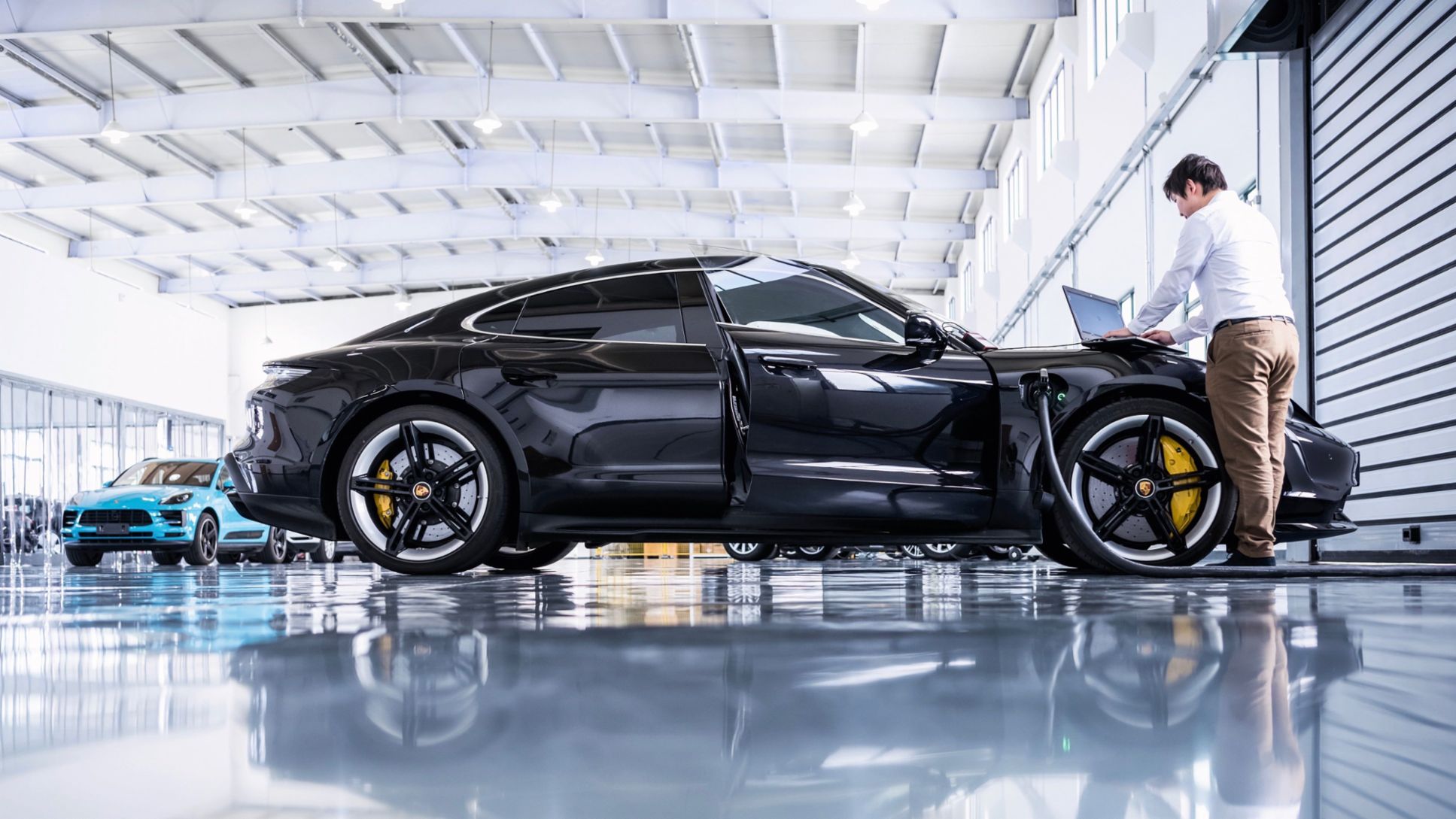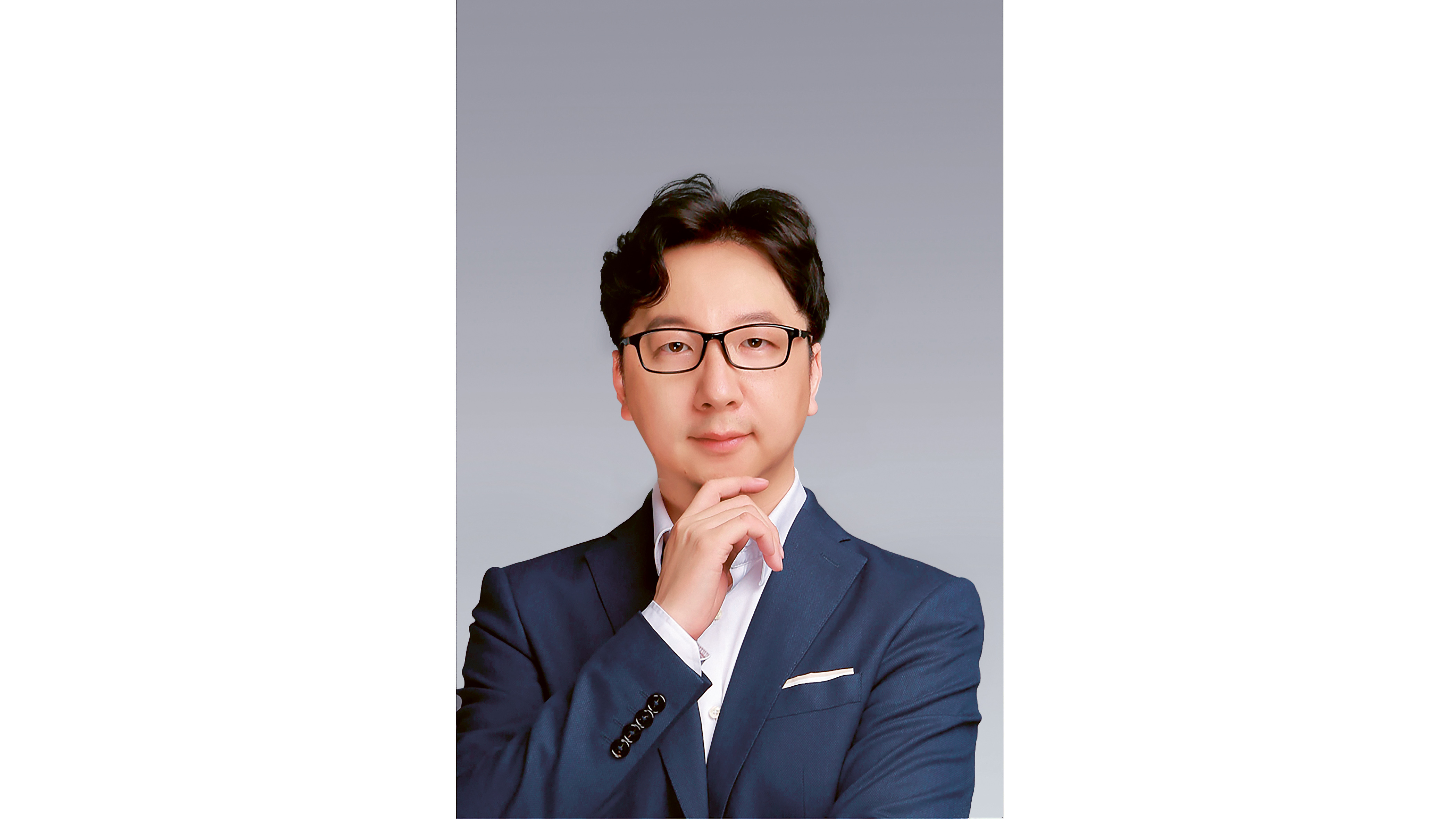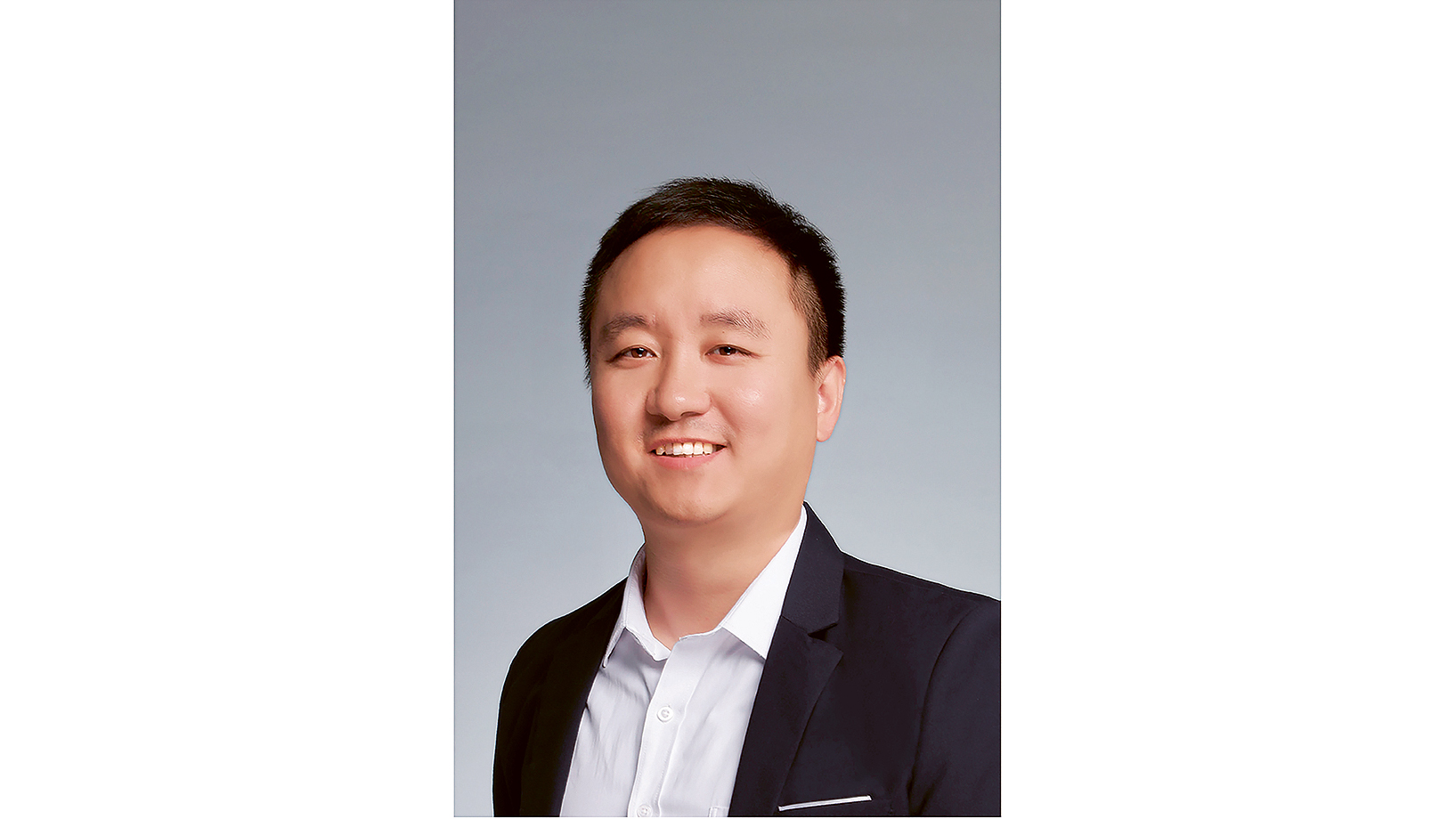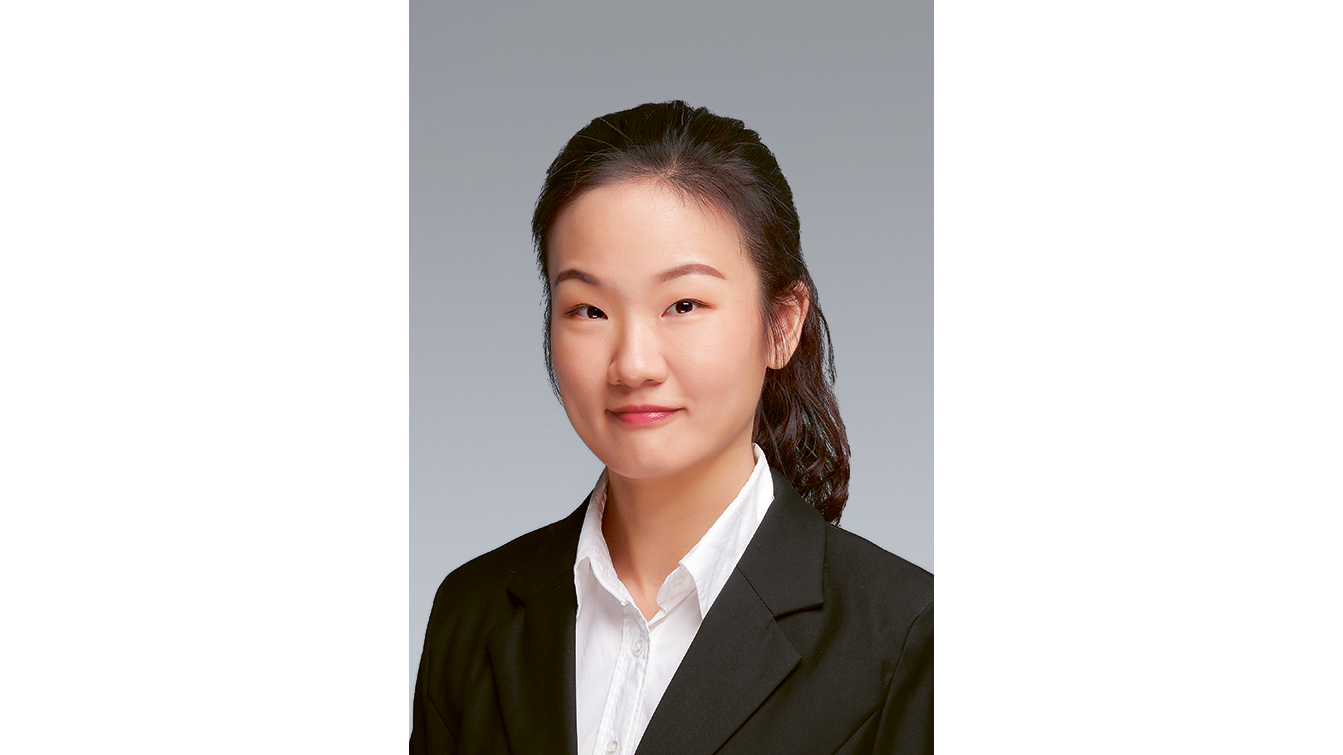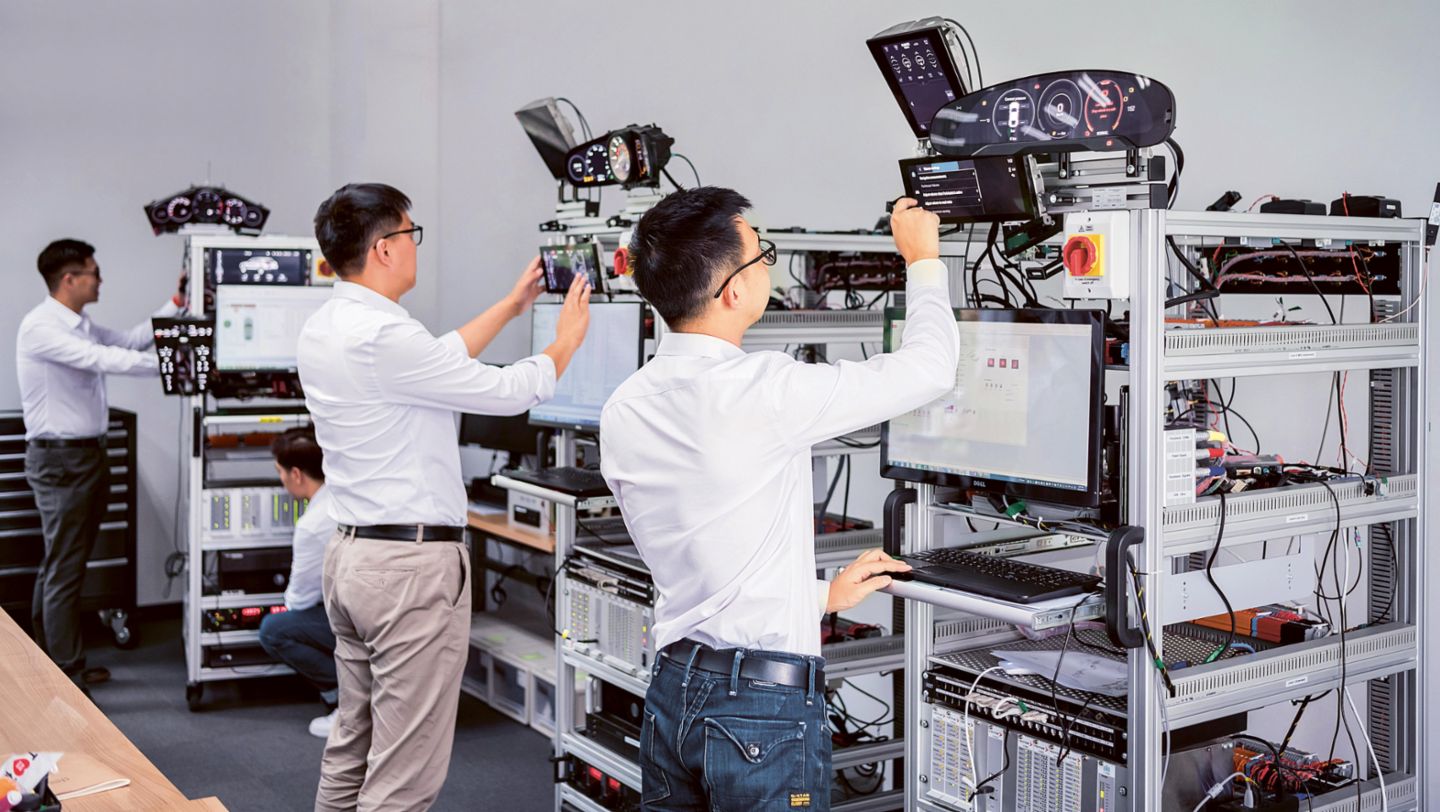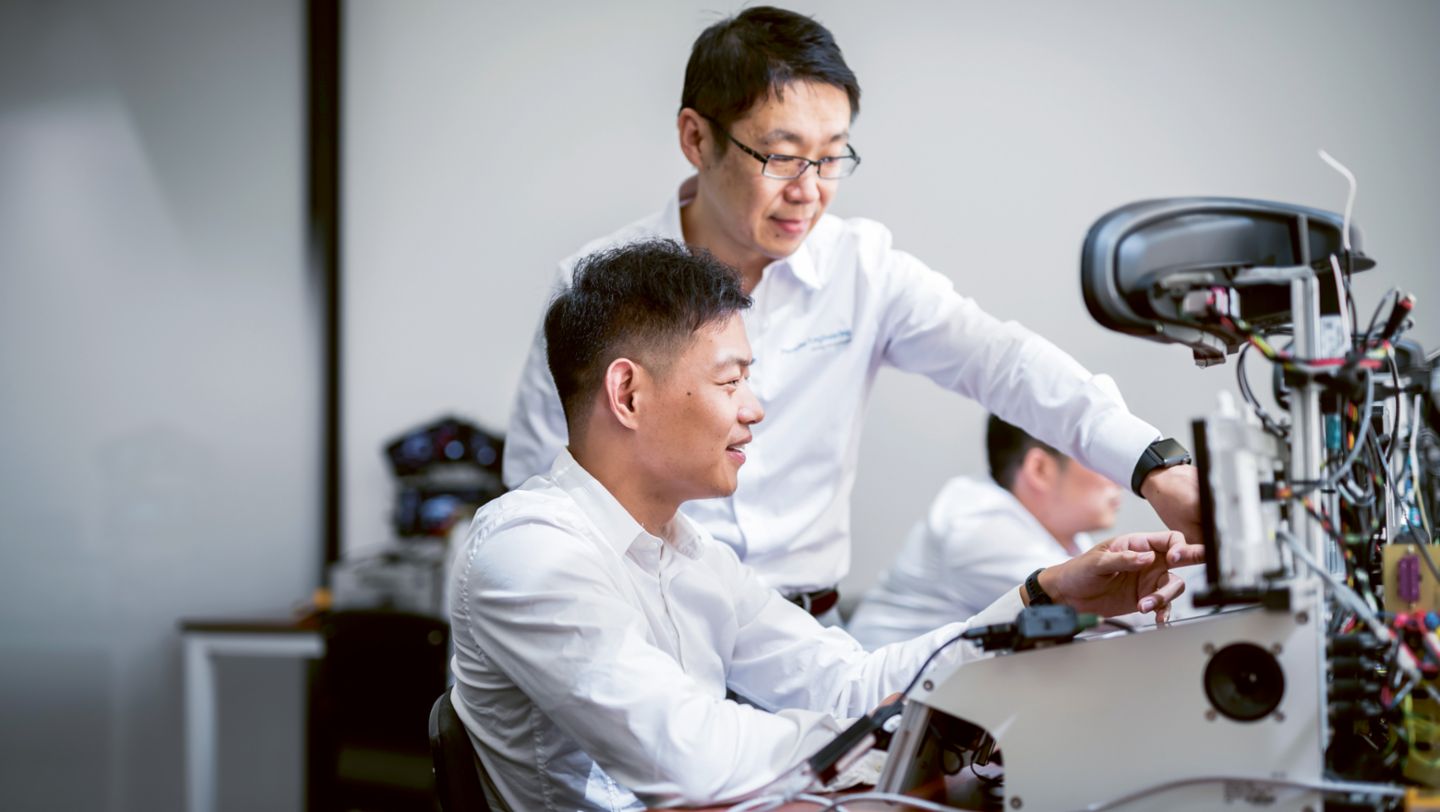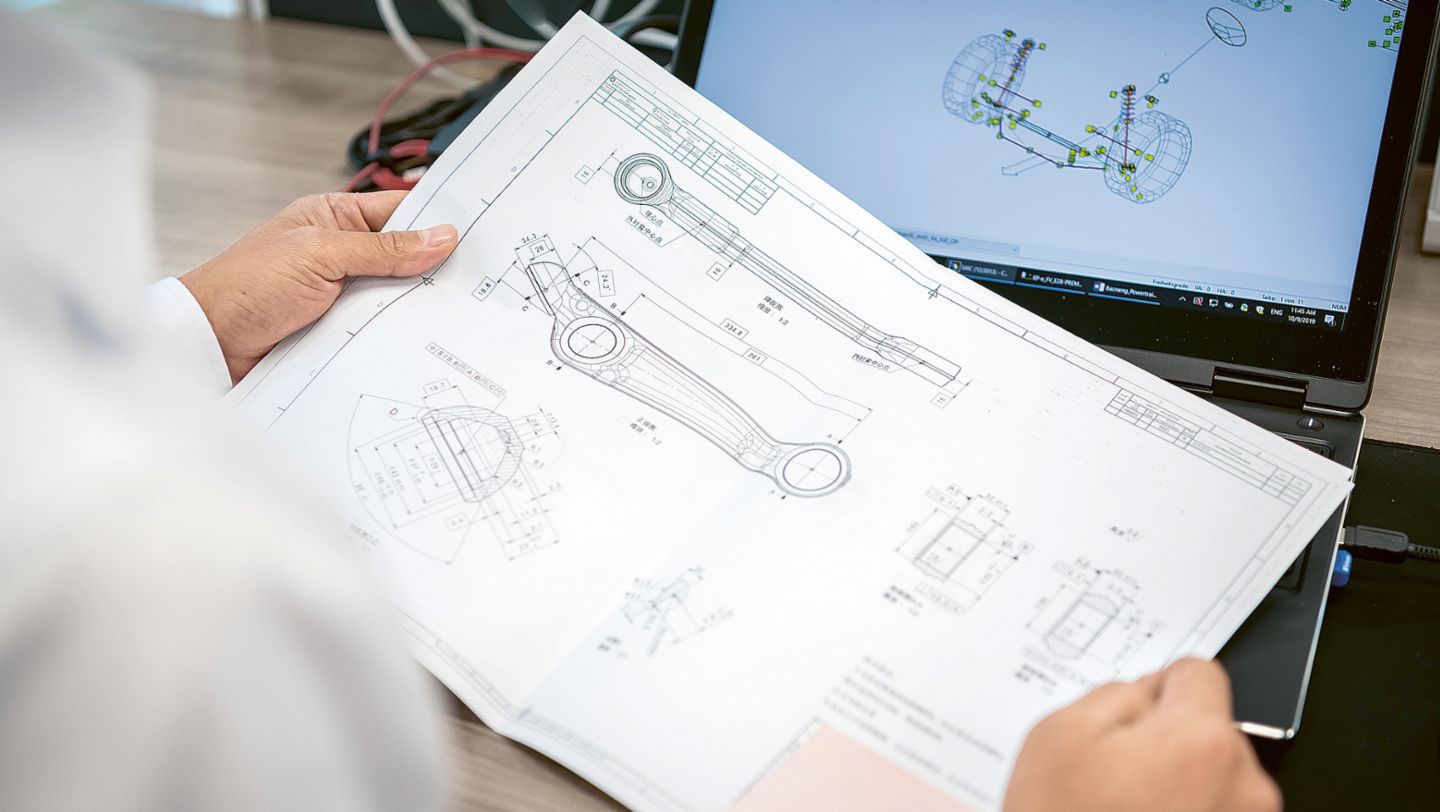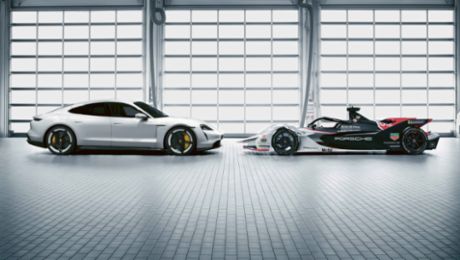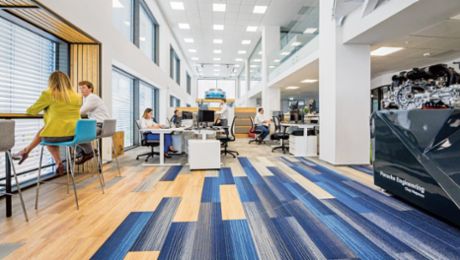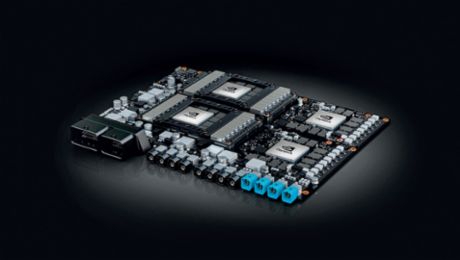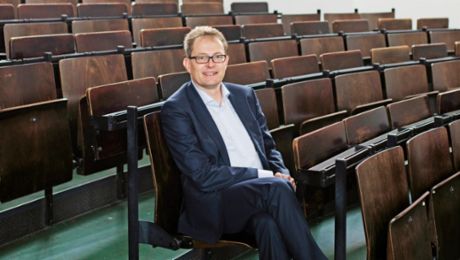Not far from the world-famous Shanghai International Circuit, home to the Chinese Grand Prix, is the town of Anting – one of China’s earliest and most important automotive hubs. Shanghai Automotive Industry Corporation (SAIC) was founded there in 1984, with the joint venture SAIC-VW following in 1988. Today, start-ups like Nio and suppliers like Schaeffler, ZF and Brose maintain sites here too. Almost everything else in the town is connected to cars: in 2007 an automobile museum opened and it now neighbours a Porsche Experience Centre. It is unsurprising, therefore, that Porsche Engineering chose Anting for its Chinese base.
For more than 25 years, Porsche Engineering has assisted Chinese customers.
The company has pursued engineering projects here together with its local customers since 2015. Key fields of research are suspension systems, high-power charging and software development. Porsche Engineering’s Chinese operations have history: the engineers have been active here for more than 25 years so opening a branch here was the logical thing to do.
“Customer projects have always been part and parcel of Porsche,” says Kurt Schwaiger, head of the Shanghai branch. “We’re simply continuing the history.” Besides Chinese OEMs, the key accounts also include companies from the VW Group.
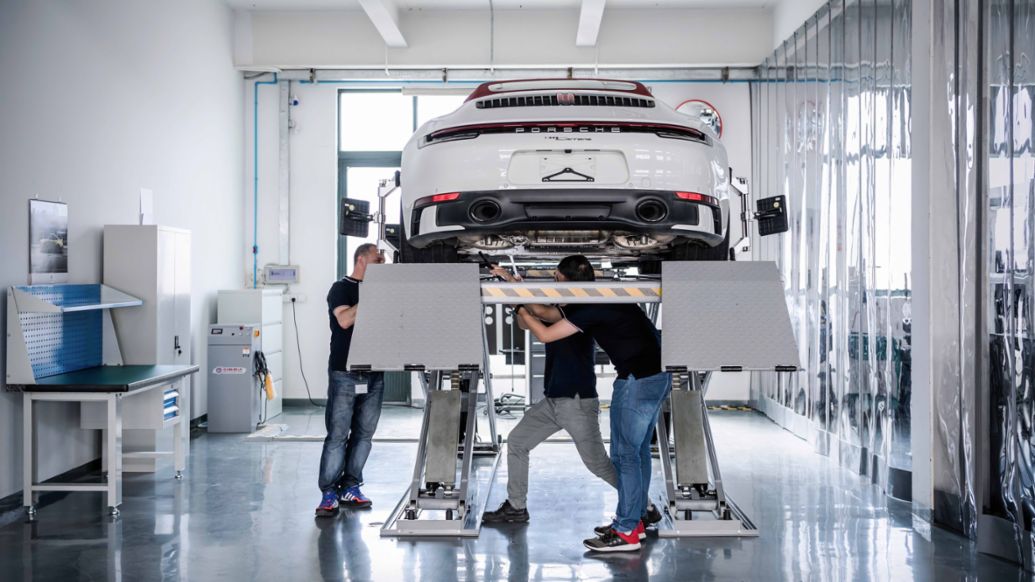
Better response to customer requirements
Kurt Schwaiger plans to use the Anting site to respond more rapidly to customer requirements. For starters, it gets around the six or seven hour time difference between China and Germany, which is often a stumbling block in terms of quick project turnarounds. Gone too is the language barrier. Today, Kurt Schwaiger and his team can support Chinese customers in developing vehicles, while ensuring western customers know valuable details concerning the Chinese market.
With major changes in the market, Porsche Engineering’s expertise is becoming ever more sought-after. The times when China was “the world’s workshop” have long gone: the country is advancing towards a high-tech economy with a large, well-educated and affluent middle class. Customers have always been as demanding here as they are in the traditional markets. The government has ambitious plans, too: China wants the intelligent and connected vehicle – ICV for short – to be a common sight on its roads by 2025 at the latest. The aim is to have all vehicles communicate in real time and to share data, for example on congested traffic. In addition, China wants 15 per cent of all vehicles in the country to be highly automated and ten per cent to be driving entirely by themselves by the year 2030. This gives the Chinese market tremendous influence on the future of the motor car.
“It all started with chassis design,” explains Schwaiger. “We made a name for ourselves with that here.” Today, this has become entire suspension systems based on highly advanced electronics: all-wheel steering, stabilisers, all-wheel drive, air suspension. “The past two years have seen customer interest in electronic suspension systems rise significantly,” Schwaiger says. And then there’s the electrical engineering and electronics division (E/E), which deals with all of the smart control units in a vehicle. The tech specialists at Porsche Engineering in Shanghai always start by developing the software to match their customers’ specifications, before checking it on HiL (hardware-in-the-loop) test rigs.
“Chinese traffic is different to traffic in Europe or the USA. People have a different way of driving.” Ben Wang, Manager Software Development
The test rigs lead the control units to act just as they would if they were in a real vehicle, enabling trial runs long before any prototypes are available. While all tests were previously carried out in Germany, Anting now has the necessary equipment on site. “We save so much time now that we can run the important tests right here and right away,” says Naikai Du, who is also responsible for HiL test rig development in Anting.
High-power charging for electric vehicles is another major topic in China, where a huge market for electric cars is emerging. Porsche Engineering developed a special charging station that delivers up to 350 kW of charging power to recharge a Porsche Taycan in mere minutes. The major markets, however, all observe different standards. China is subject to the national GB/T standard (GuoBiao), which means that the charging station needs to be adjusted to comply with the Chinese market’s specifications. “We and a local enterprise are acting development partners for this. All Porsche dealers in China will be supplied with this charging station,” continues Schwaiger.
Porsche Engineering’s work in Anting is moving increasingly into software development. To some extent this is due to the smart chassis systems, but overall is owed to the new electronic driver assistance systems, which lead up to the self-driving cars of the future. More than any others, these assistance systems need to be designed on the ground in China. “Chinese traffic is different to traffic in Europe or the USA. Chinese people have a different way of driving,” explains Ben Wang, who hails from the neighboring province of Jiangsu and joined Porsche Engineering two years ago. “For instance, the relative number of learner drivers is much higher in China. Some of the traffic signs are different, too, and automatic parking needs to take into account that underground parking lots in China are designed differently.” Wang considers his job both a challenge and an inspiration: “We’re always needing to adapt to new customer requirements. The fields of traffic and traffic control, for example, are massively in flux.”
Seamlessly integrated car and phone
Testing and validation are also part of the Shanghai branch’s portfolio. Here, infotainment systems and their interconnectivity are a key field of operations. “Chinese drivers consider these things really important,” says Schwaiger. Indeed, smartphones feature in every walk of life here, perhaps more so than anywhere else in the world. Nowadays, almost every day-to-day activity is resolved, optimised and measured using a mobile phone.
WeChat, for example, appears at first to be a Chinese version of WhatsApp. But it also acts like Instagram, Facebook, Twitter, and – most significantly – as a credit card. Almost all payment transactions in China these days use WeChat Pay, or its competitor service Alipay. “So Chinese drivers all assume there’s a seamless integration between car and smartphone,” Schwaiger says.
Network integration goes further still, pursuing congestion prevention and the immediate detection of accidents. “Plug-in hybrids and fully electric vehicles send related data to the national data centre via a corporate server,” Estha Li explains. She comes from Beijing and has been part of the Porsche Engineering team since 2017. “Our server lets us share data specifically and as needed, which lets us realise all kinds of support for drivers. The corresponding functions have to be developed here in China: indeed they couldn’t be developed elsewhere.
Kurt Schwaiger, the branch manager, has lived in Shanghai for the past ten years. When he took on his job in Anting in 2015, the Shanghai branch employed a staff of eight. Today, the workforce totals 75 and that number will grow to more than100 by the end of the year. At the same time, the business premises will grow from 1,500 to 2,100 square metres. Geographically, the site divides into two locations: the larger of the two is in the Autocity Innovation Park in Anting. In the months ahead, a second building will be rented to allow for expansion of the team and the first floor will feature a workshop accessible to customers. The second location is in Minhang, a suburban district in Shanghai’s southeast.
>100 staff will be working at the Shanghai branch by late 2020.
A regular part of the Shanghai branch’s operations is its cooperation with renowned Tongji University. Every two years, the partners jointly host the Tongji Porsche Engineering Symposium, a platform for top executives to discuss the latest developments in the automotive trade. The cooperation also includes exchanges in the form of internships and thesis programmes as well as sponsoring the local Formula Student team, which allows students to design their own racing cars and take part in competitive racing. This provides the branch with ideal connections to one of China’s best talent pools – essential for continued growth in one of the world’s most important automotive markets.
In brief
The Chinese market is heavily in flux. Customers expect the best technology and solutions tailored to their requirements: for example, when it comes to integrating vehicle and smartphone. In its branch in Anting, Porsche Engineering is right on the market’s pulse and responds rapidly to local customers’ queries. At the same time, the staff supply western businesses with valuable insights into the Chinese market.
Three questions for Kurt Schwaiger
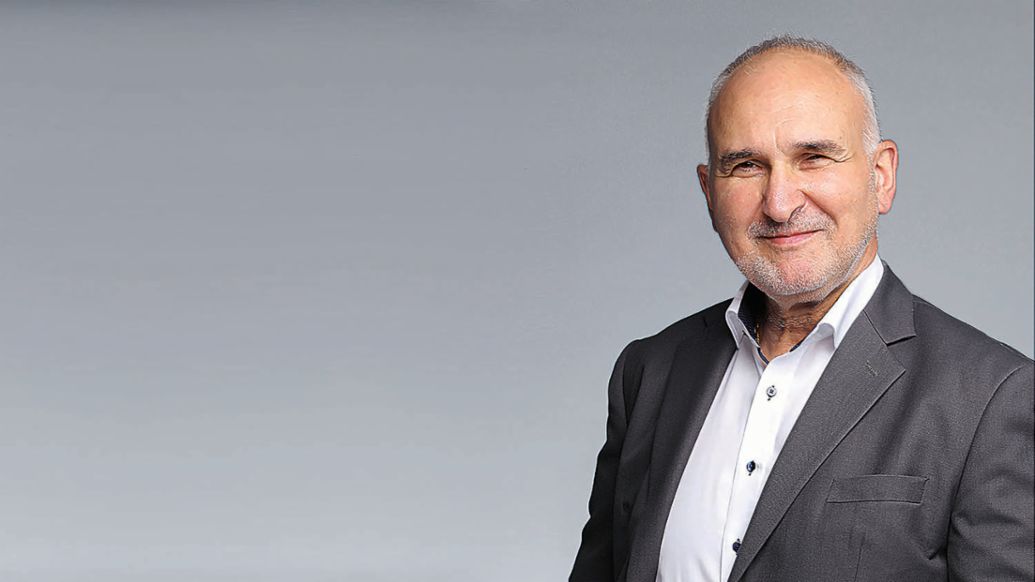
1. What do customers in China expect?
A rapid response, most of all. Everything here moves much faster. That’s why it’s so important to have our branch in Shanghai, in the same time zone as our customers and with the requisite language skills, so that we can react quickly and flexibly to requirements. There’s also a keen eye on prices.
2. Is it difficult to find good staff in China?
Generally speaking, China has an abundance of good, skilled workers. But locating them isn’t always so easy. Here in Shanghai, our location gives us an edge because a lot of Chinese people want to be here. Our good connections to Tongji University also help us find new young talent. And there’s our strong brand, of course. All this keeps employee turnover in the low single-digit figures.
3. How does the Chinese automotive market differ from its western counterparts?
Today, Chinese businesses operate at a really high level. Highly automated driving is going to be a major thing in China in the years to come. In this area China is treading new paths, as a pioneer. For V2X applications, for instance, they’ll be using only mobile comms standards like LTE-V and 5G. Because the Chinese government doesn’t permit the export of geo-based data, all the testing needs to be done here in the country.
Info
Text: Thomas Kern
Contributor: Kurt Schwaiger
Photos: Kai Hartmann
Text first published in the Magazine Porsche Engineering, issue 1/2020
